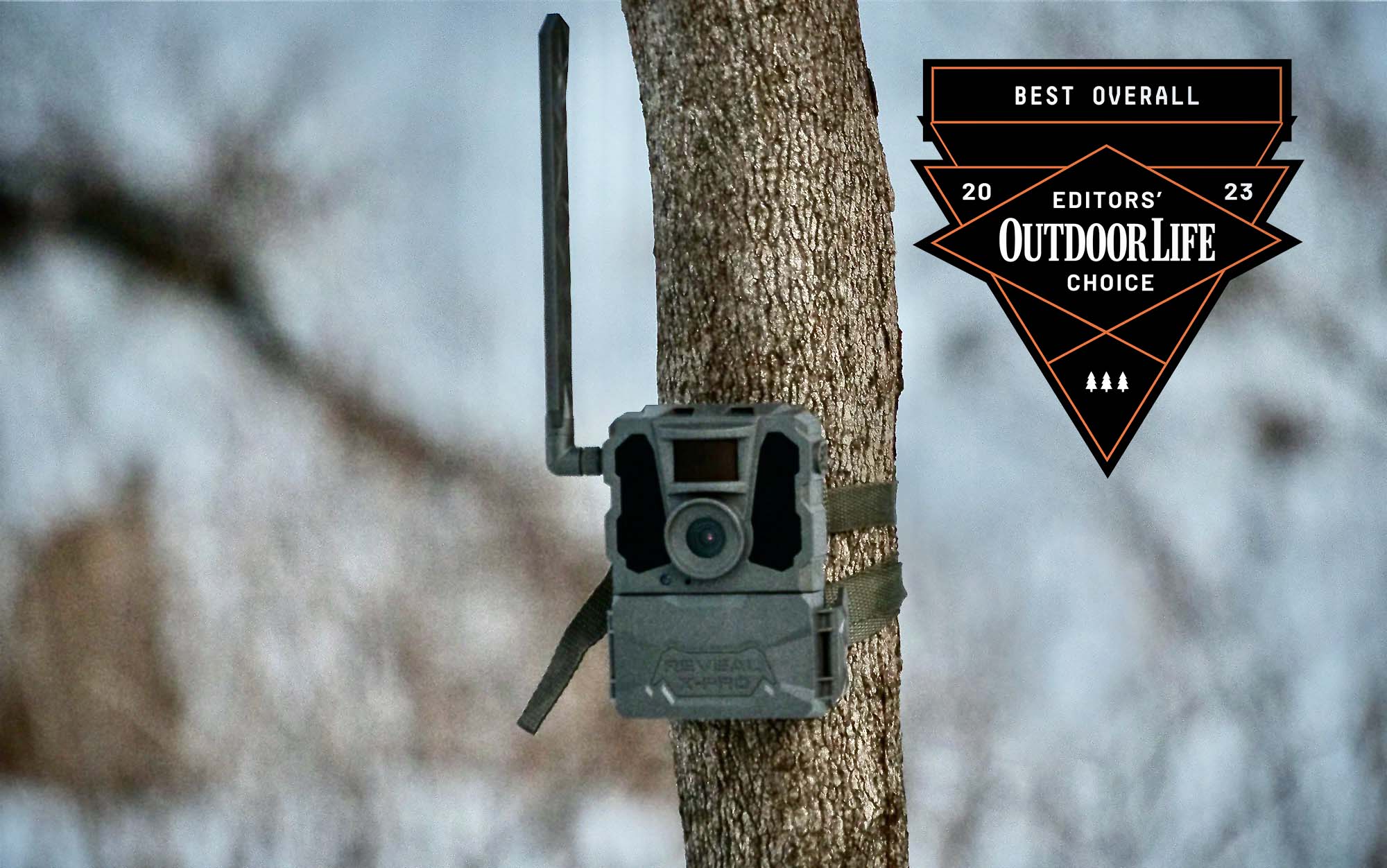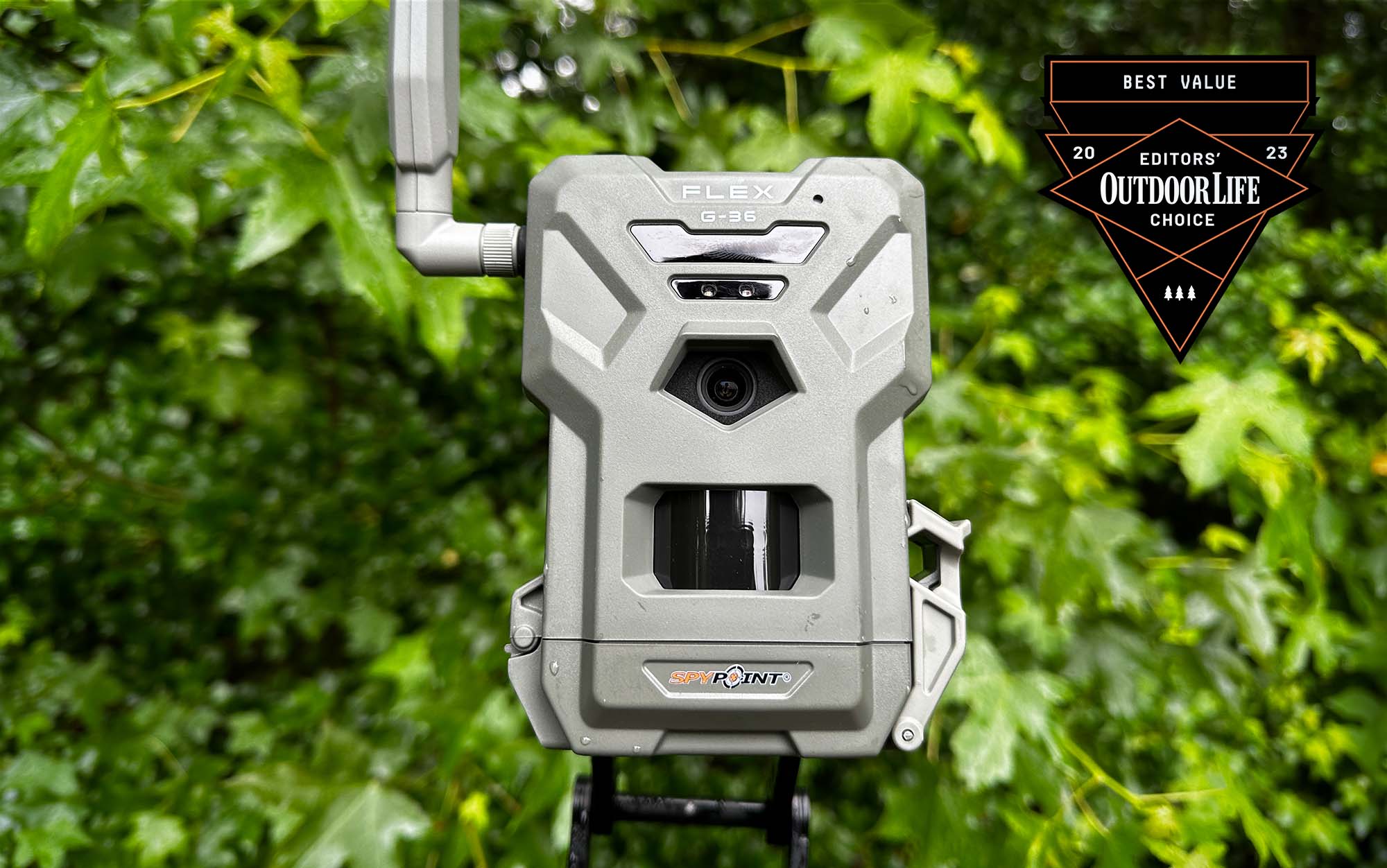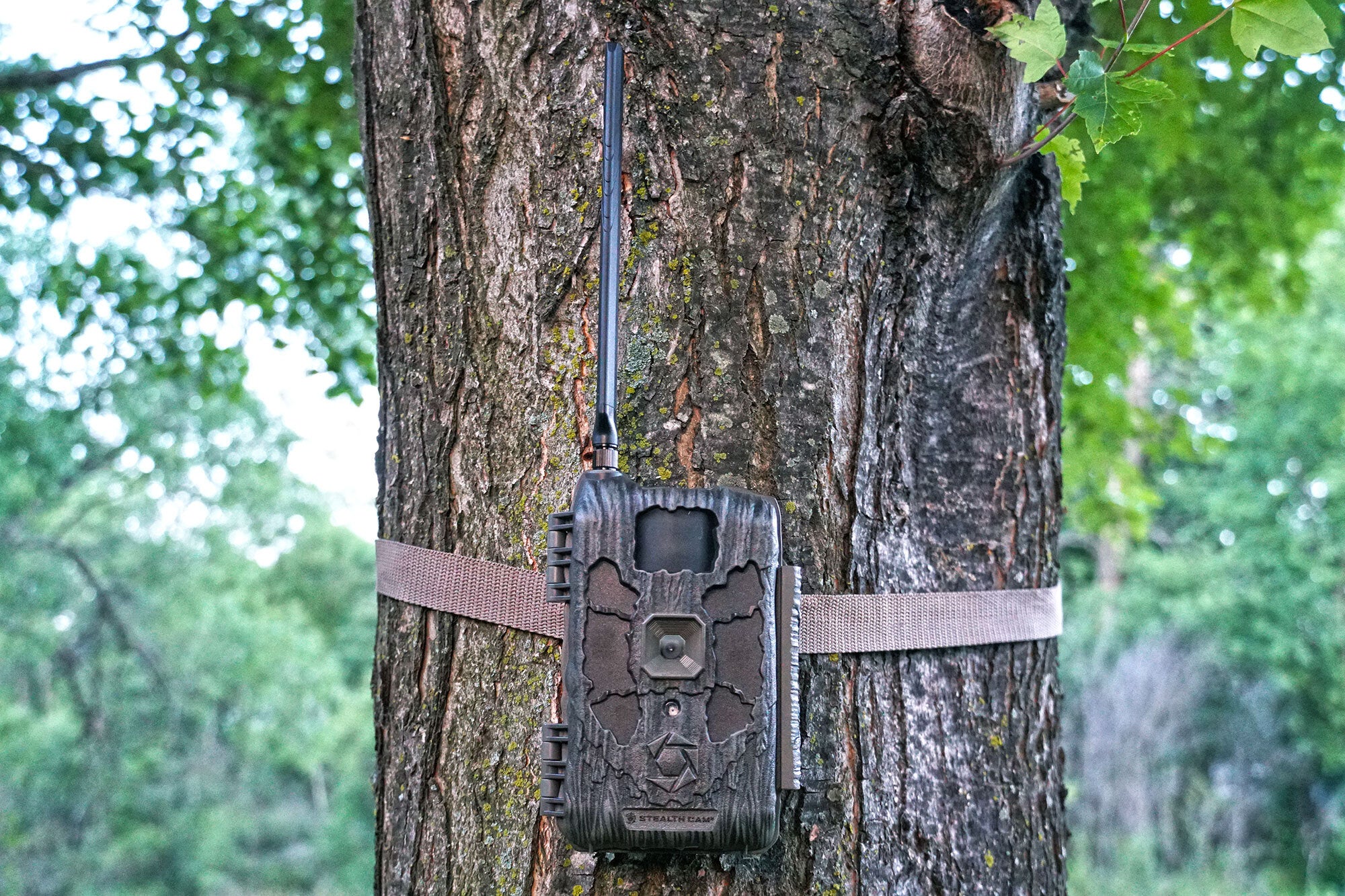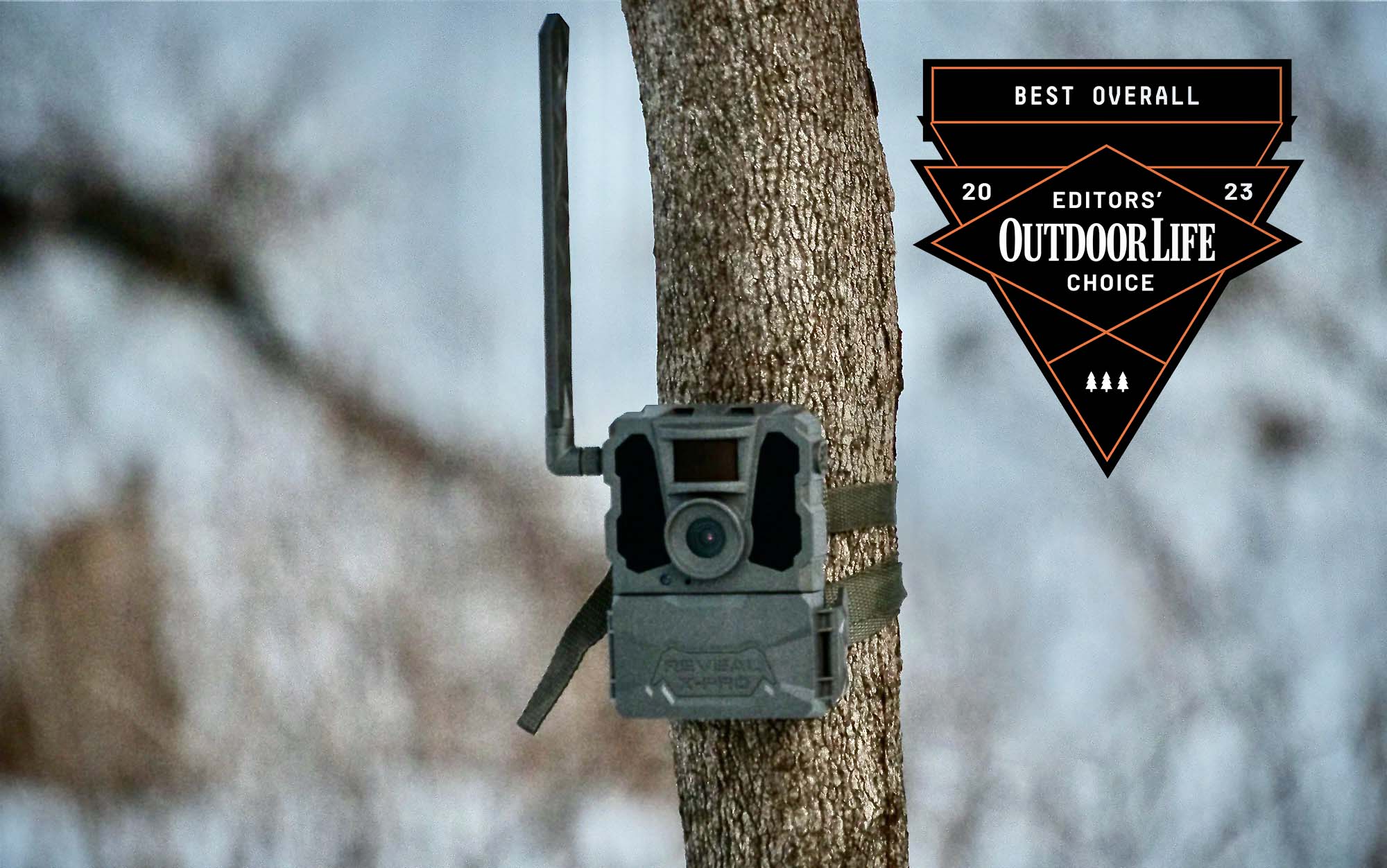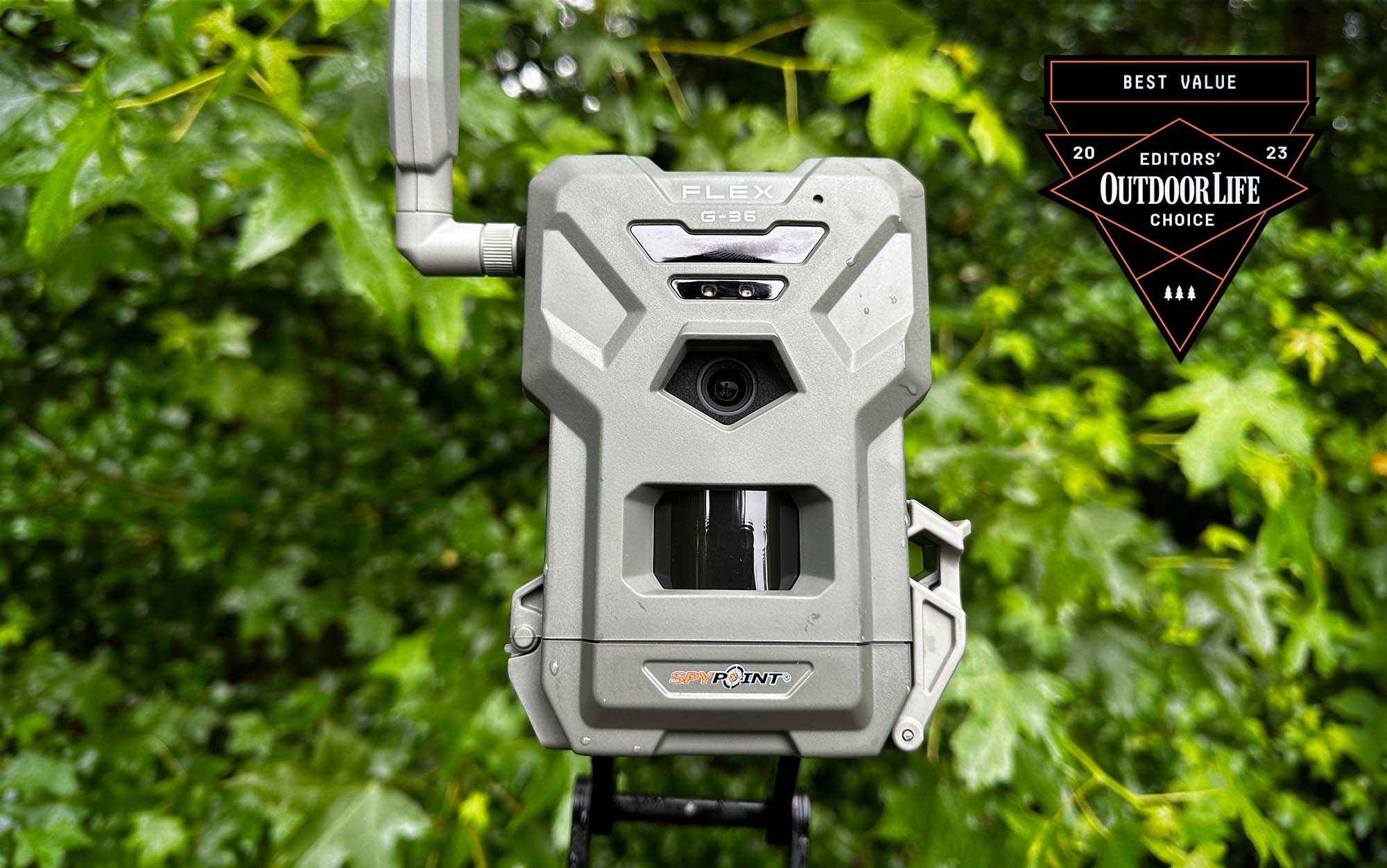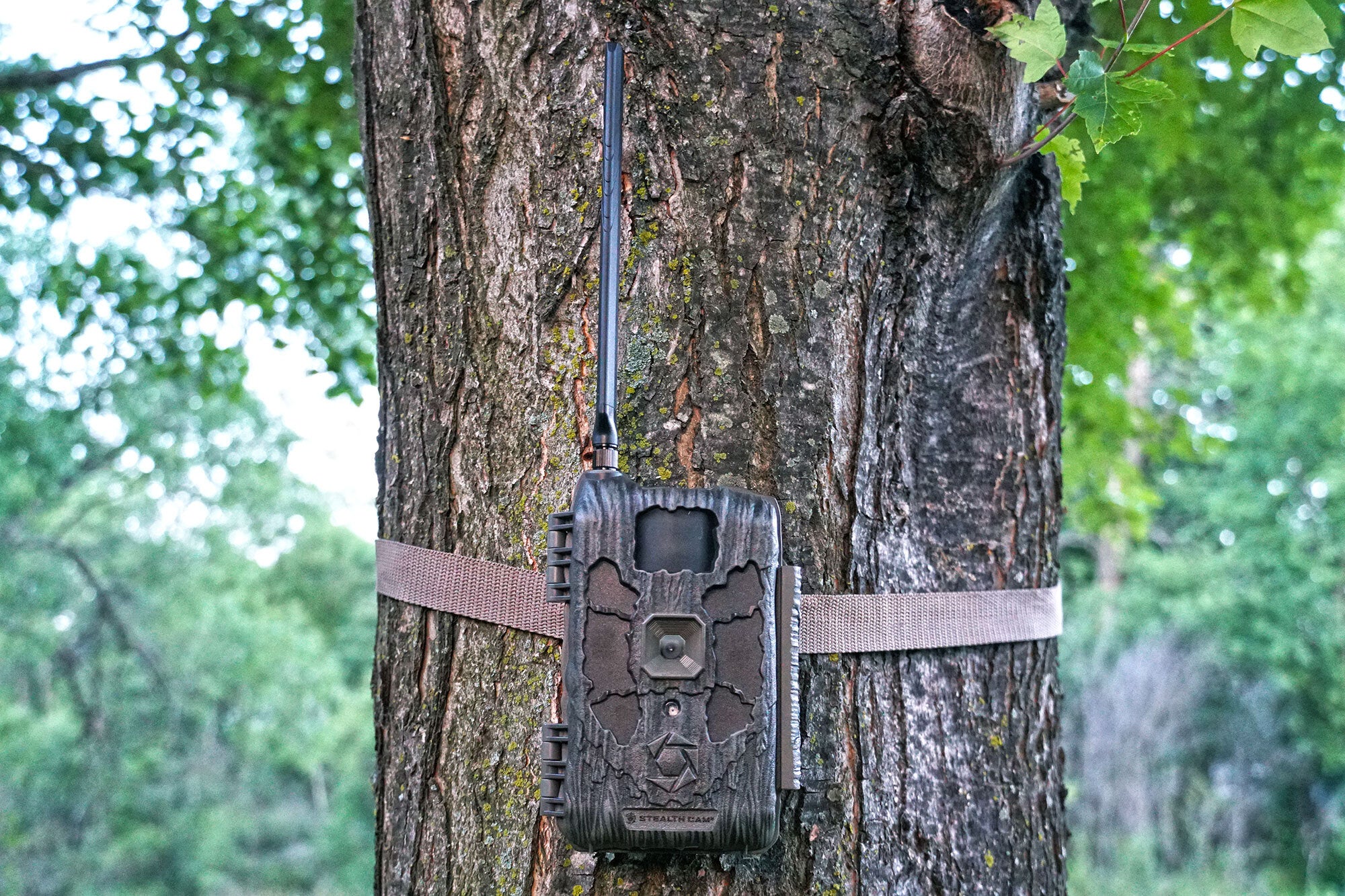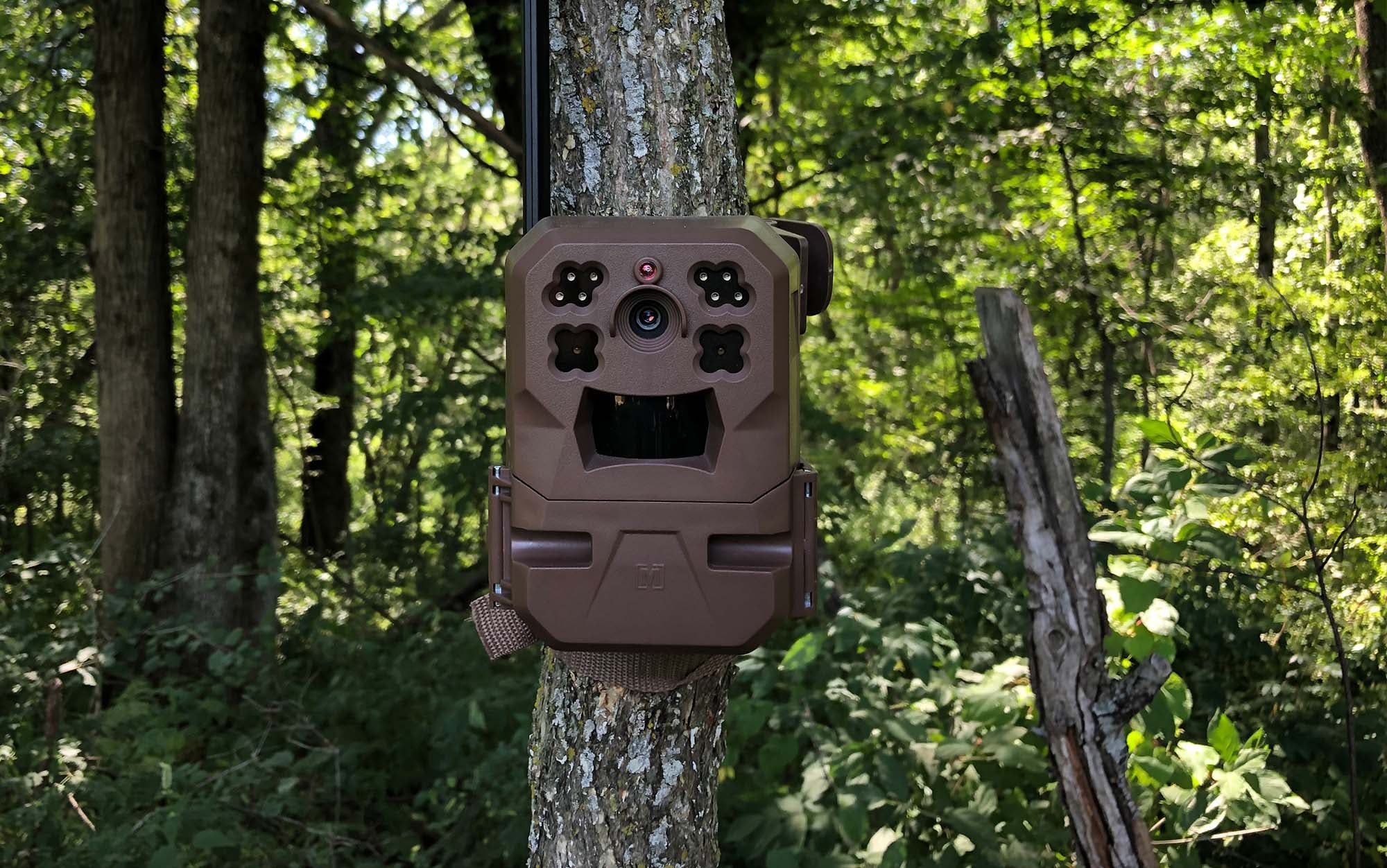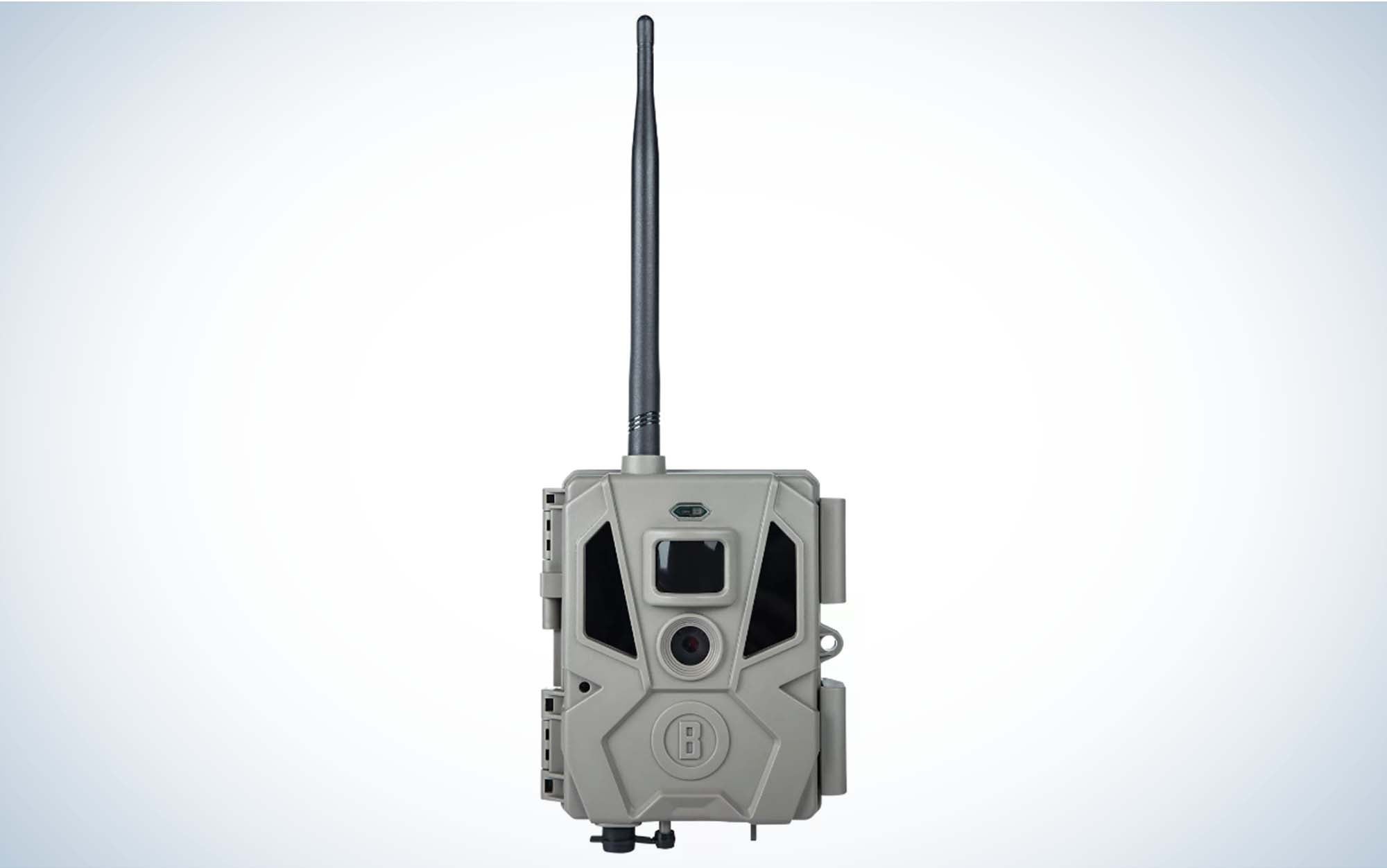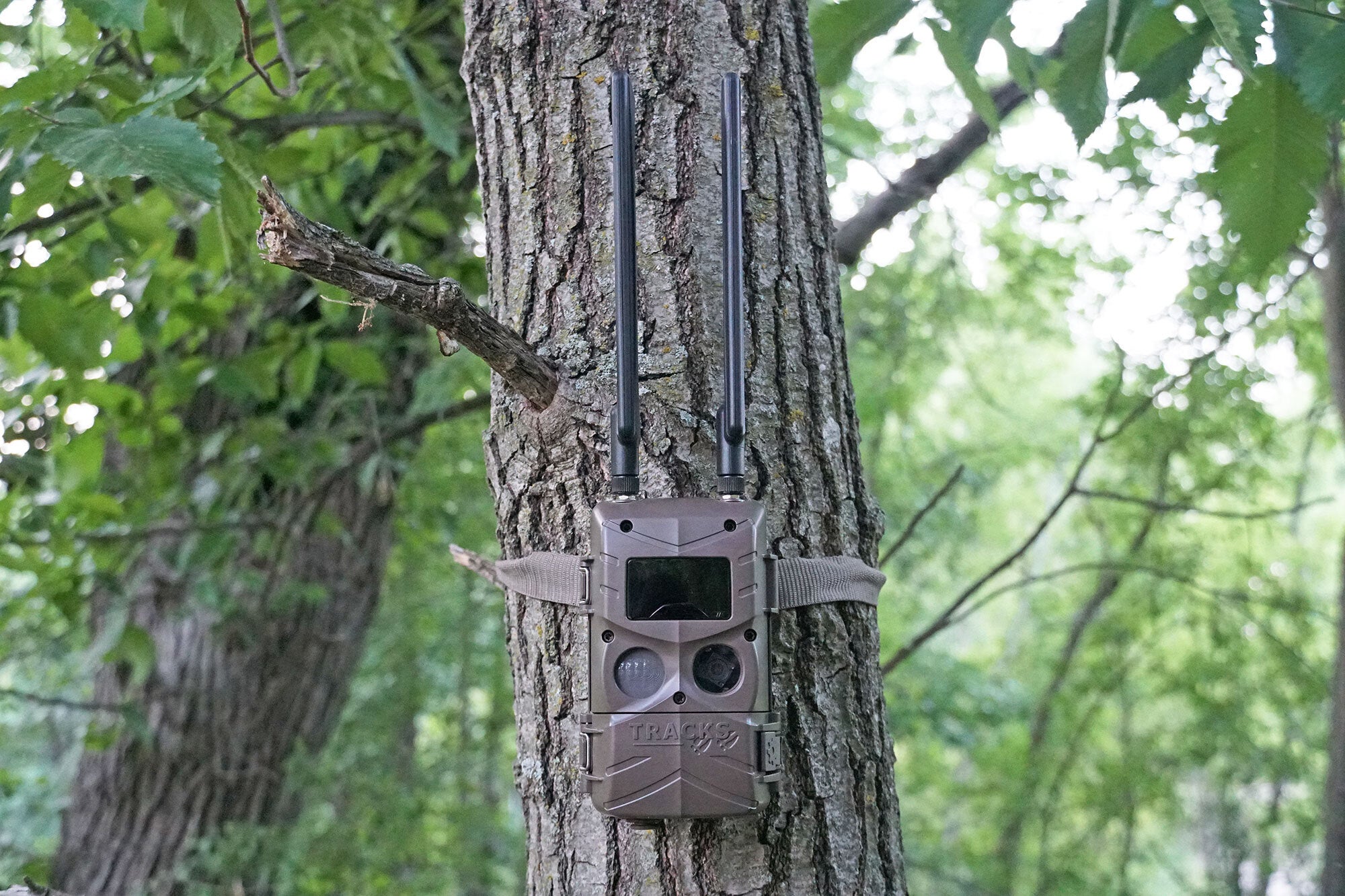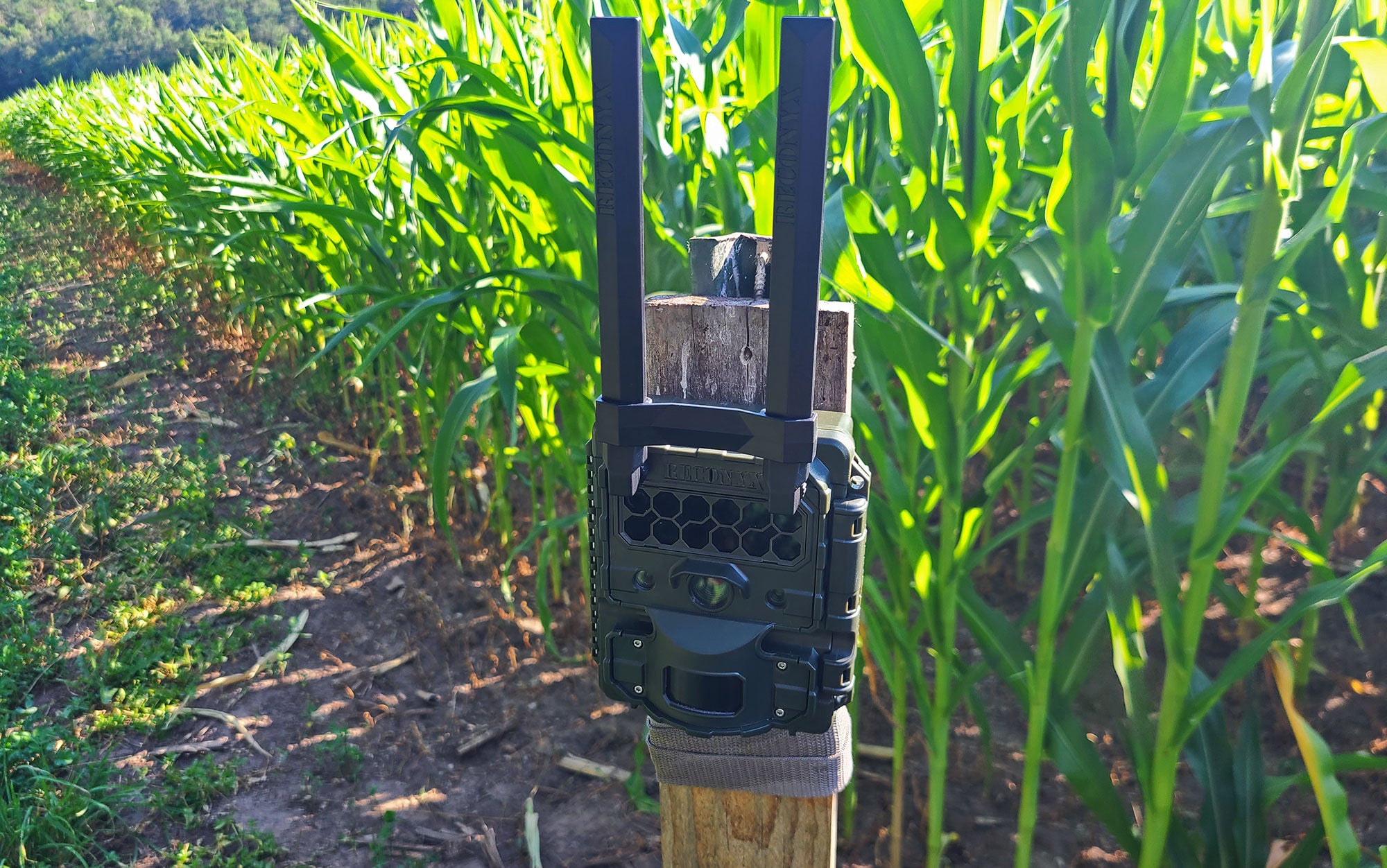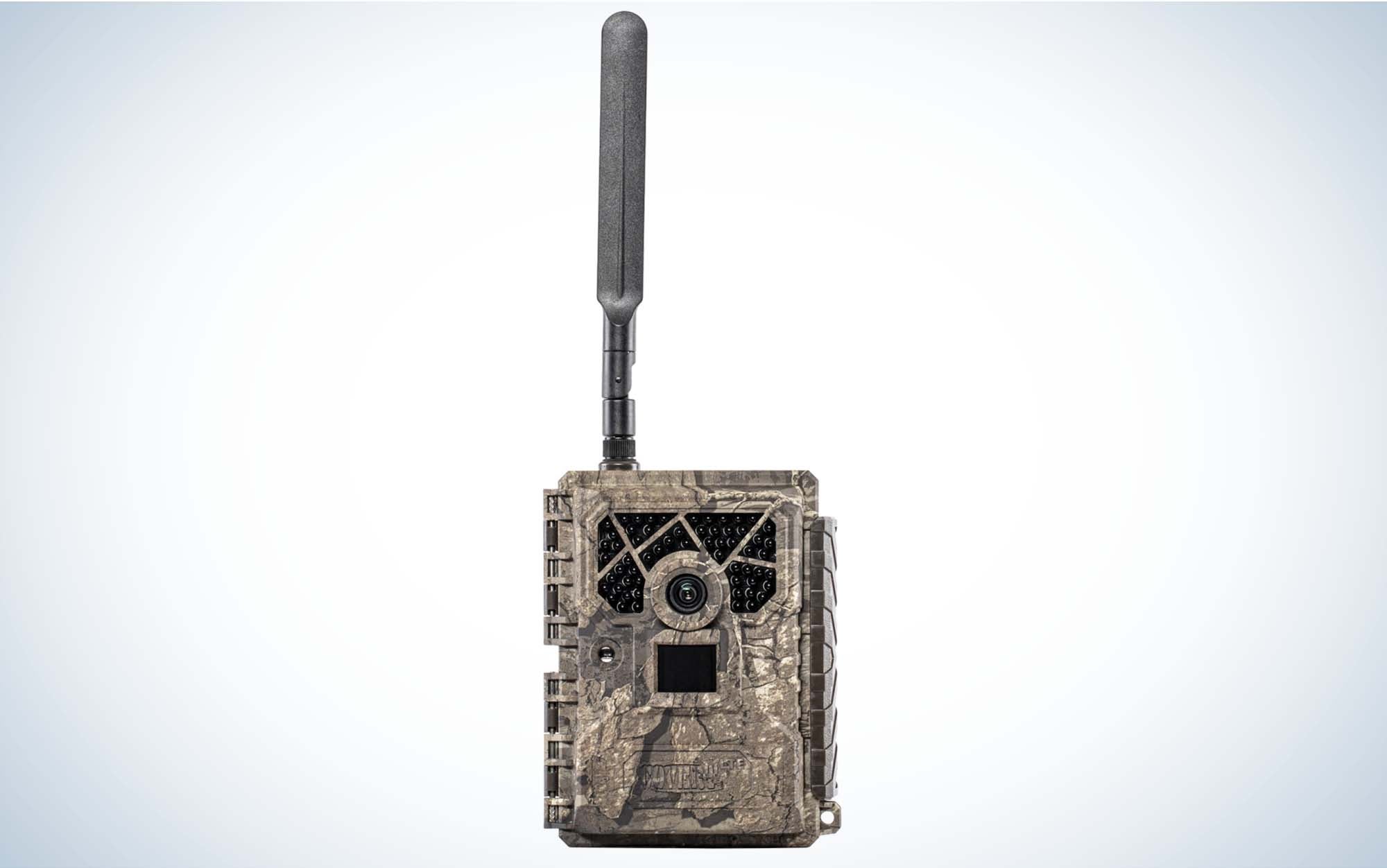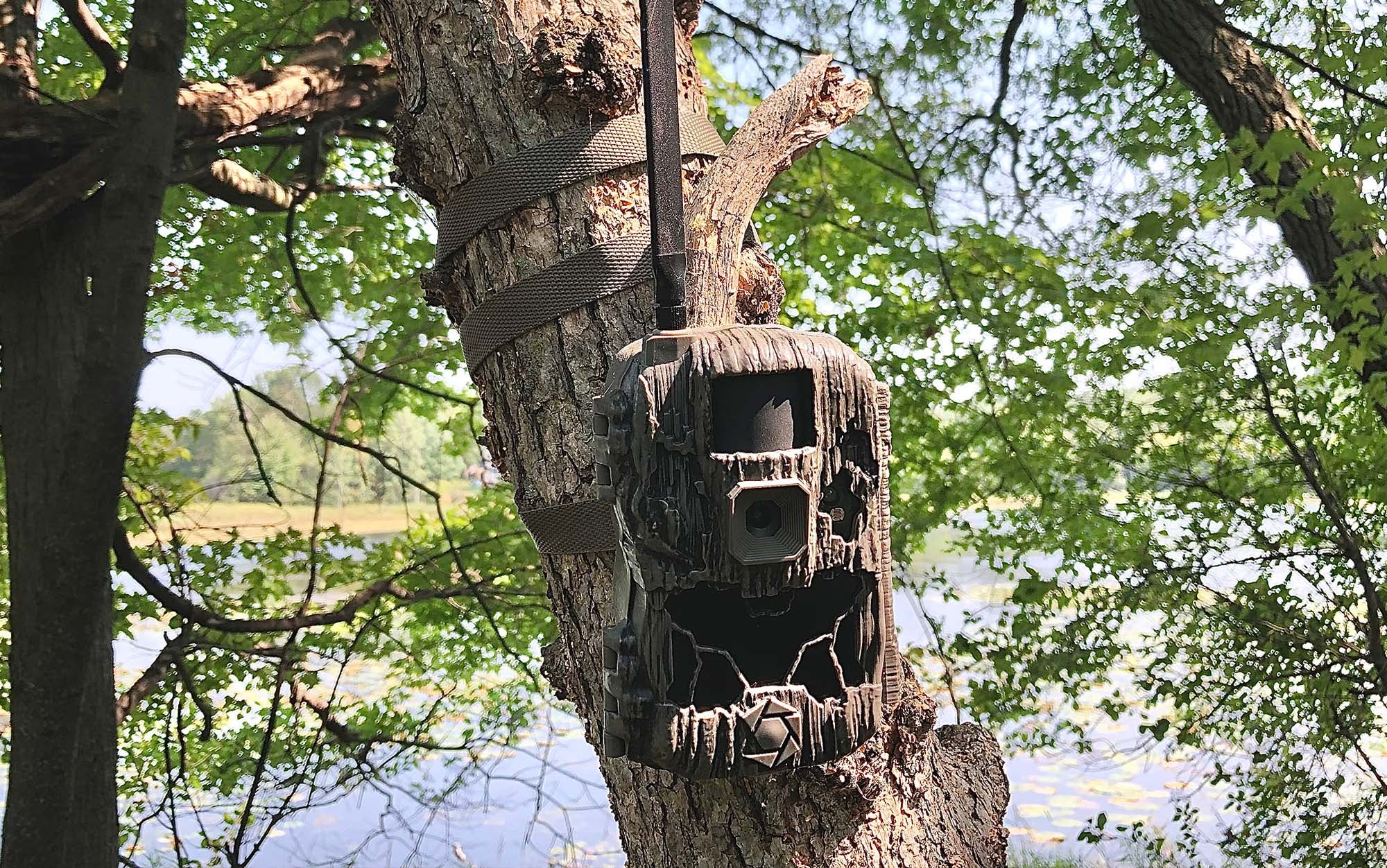The Best Cellular Trail Cameras of 2023, Tested and Reviewed
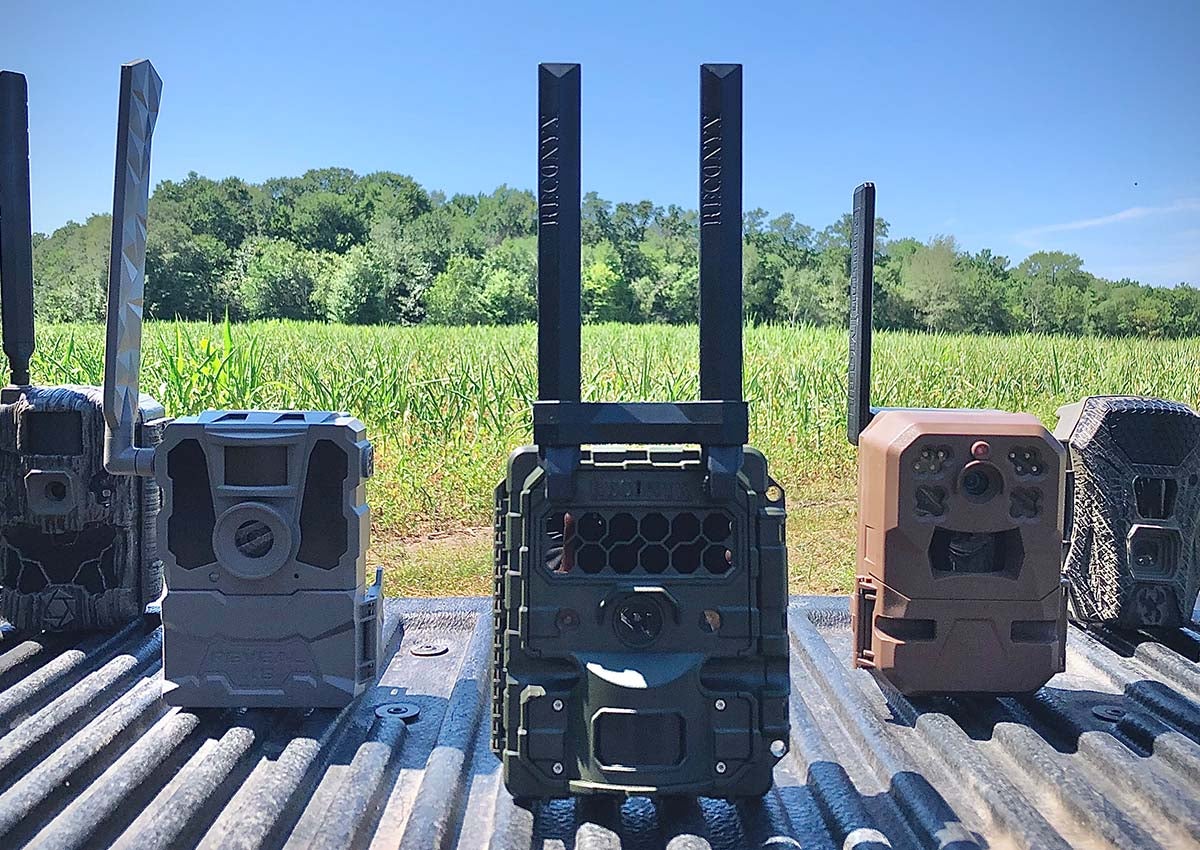
We may earn revenue from the products available on this page and participate in affiliate programs. Learn More ›
Let’s get this part out of the way first: Trail cameras are a pain in the ass. Batteries die, SD cards get corrupted, settings get messed up, and squirrels trigger thousands of useless images. So why would you make your trail camera strategy more complicated by throwing in cellular cameras, which require network connection and pairing with apps? Simple, it’s because once you finally have the best cellular trail cameras linked up and set properly, they provide you with constant, realtime scouting information that will help you pattern deer.
With that in mind three diehard deer hunters spent the last year testing the top cellular trail cams. We ran them in the field and conducted a standardized backyard walkthrough test. Our results will help you pick the best cellular trail cameras for your hunting style and area.
- Best Overall: Tactacam Reveal X-Pro
- Best Budget Cell Cam: SpyPoint Flex G-36
- Best Night Photos: Stealth Cam Deceptor No-Glo
- Best App: Moultrie Mobile Edge
- Cuddeback Tracks
- Bushnell Cellucore 20
- Reconyx Hyperfire 2
- Covert Blackhawk LTE
- Stealth DS4K Transmit
- Wildgame Terra Cell
How Cellular Trail Cameras Work
All the cell cams in this test have a similar basic setup process. First you download an app from the company. Then you set up a plan, load the camera with batteries, a sim card, and an SD card, pair the camera with the app (by scanning a QR code with your phone) and then establish your camera settings. When set in an area with cell service, the camera will send photos (or videos) to the app. Plans for each company are structured differently, but there are usually monthly or annual options ranging from about $5 per month to more than $20 per month.
How We Tested the Best Cellular Trail Cams
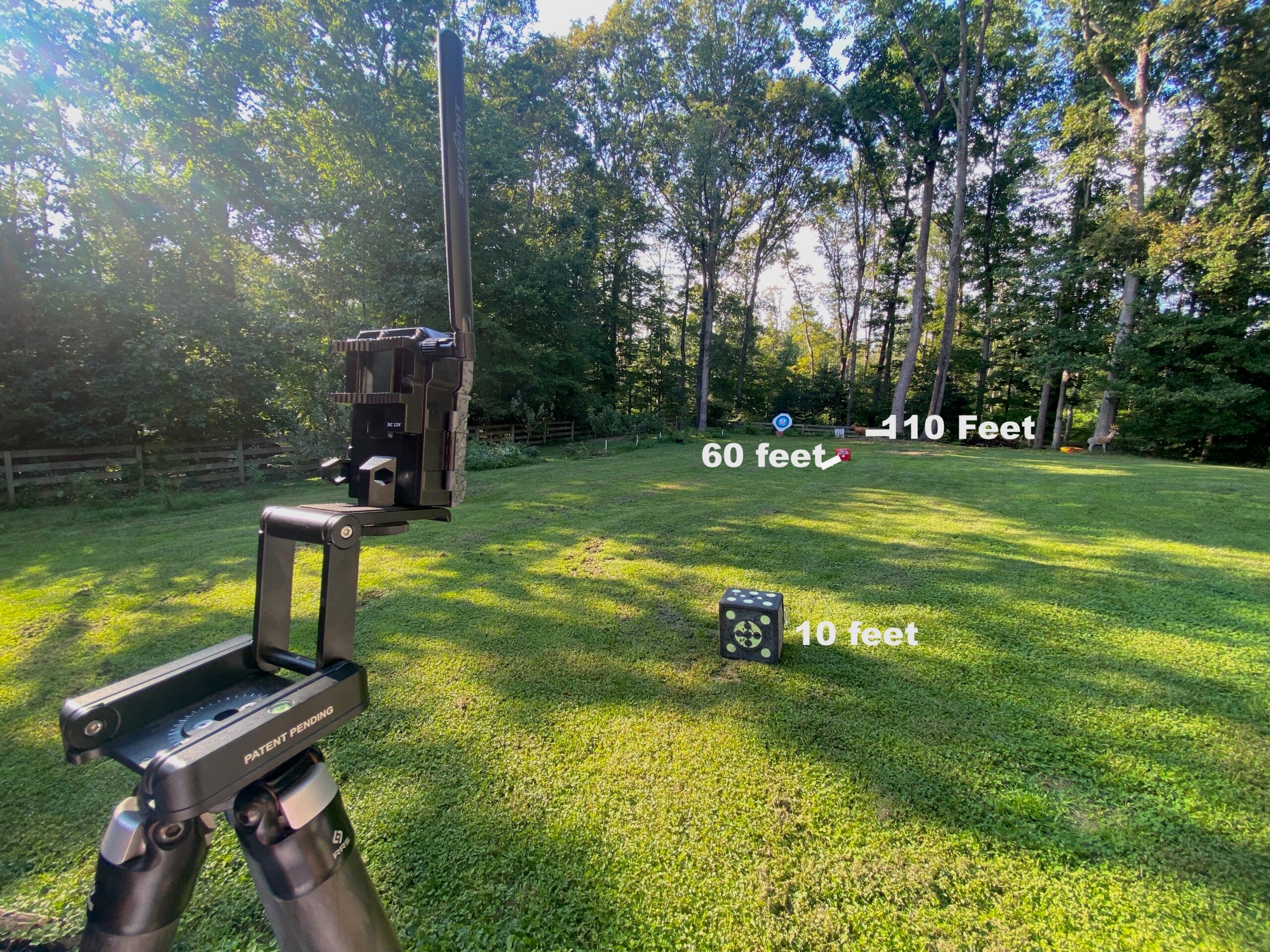
Each cellular trail camera was set to its fastest shooting mode and highest sensitivity. Markers were placed at 10 feet, 60 feet, and 110 feet. Then the tester walked past the camera (left to right and then right to left) at a medium pace at each given distance. The walkthrough test was then repeated at night. The test is meant to measure the camera’s detection range, trigger speed, shutter speed, and flash range. We looked for blank photos, failures to trigger, blurry images, and overall photo quality.
From there, we set each camera in the field to see how it performed in real world conditions. We set cameras in areas that had reasonable cell service. In the field, we evaluated the camera’s photo quality, reliability, and ease of setup. This included the ability to use each camera’s app to review and sort photos.
The Test Team and Locations
- Scott Einsmann, gear editor, Virginia
- Drew Palmer, contributor, Kansas
- Alex Robinson, editor-in-chief, Minnesota and Wisconsin Erik Barber, contributor, Wisconsin
Read Next: Best Trail Cameras
Best Cellular Trail Cameras: Reviews & Recommendations
Best Overall: Tactacam Reveal X-Pro
Key Features
- 12 AA Batteries
- Less than 0.5 second trigger speed
- Advertised Flash Range: 80 feet
- Advertised Detection Range: 96 feet
- LTE/4G wireless module
- IP66 waterproof certified
- External port for solar panel
- Accepts Tactacam’s rechargeable lithium cartridge
- No Glow IR Technology
- Built-in LCD Screen and GPS
Pros
- No Glow IR
- Simple to set up
- Excellent photo quality
- Superior battery life with Tactacam’s solar panel and rechargeable lithium cartridge
Cons
- Cell data plans are expensive per camera
- Requires a class 10 U3 SD Card (16GB-32GB)
- Multi-shot sending requires an additional fee
The Reveal X-Pro is the most recent addition to Tactacam’s popular lineup of cellular trail cameras. A new built-in LCD screen makes the X-Pro even easier to set up when compared to the rest of the lineup already known for simplicity. Just turn the camera on, and use the LCD screen to frame your photos without the guesswork of snapping test shots. This makes it virtually impossible to miss your intended target within the camera’s field of view.
With optional accessories like an integrated solar panel and rechargeable lithium cartridge, the X-Pro provides the user with plenty of solutions to extend their camera’s battery life. Optional password protection, a built-in GPS, and the ability to run a single cable lock through the camera body and door simultaneously make the X-Pro a great option for anyone concerned about trail cam thieves.
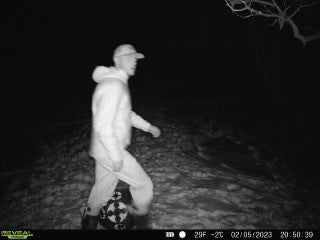
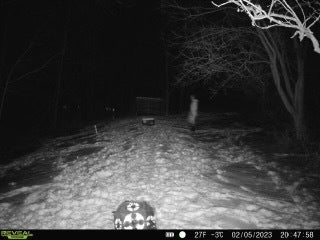
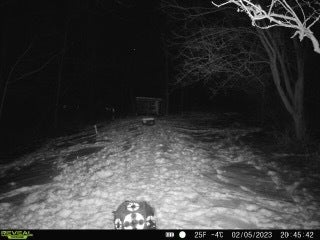
The X-Pro provides top-notch image quality that Tactacam’s lineup is known for. Most impressive, the X-Pro captured nighttime images at 110 feet during the test (30 feet further than the 80-foot detection range advertised on the website). All of the IR photos were crisp, and the camera’s shutter snaps with stop-motion speed to give superior detail at night. This is the difference between counting a buck’s tines and blurry, washed-out photos. Daytime photos were clear and vibrant. In addition, the camera settings can be adjusted so that HD videos with audio can be retrieved on-demand via the Tactacam Reveal app. —Erik Barber
Read our full Reveal X-Pro review to learn more.
Best Value: SpyPoint Flex G-36
Scott Einsmann
Key Features
- 8 AA batteries
- 0.3 second trigger speed
- Advertised Detection Range: 100 feet
- Uses micro SD cards from 2 to 512 GB
- Two-year warranty
Pros
- Fast trigger speed
- Good flash range
- Detected movement at 10, 60, and 110 feet
Cons
- About 1 minute delay between bursts—even on instant setting
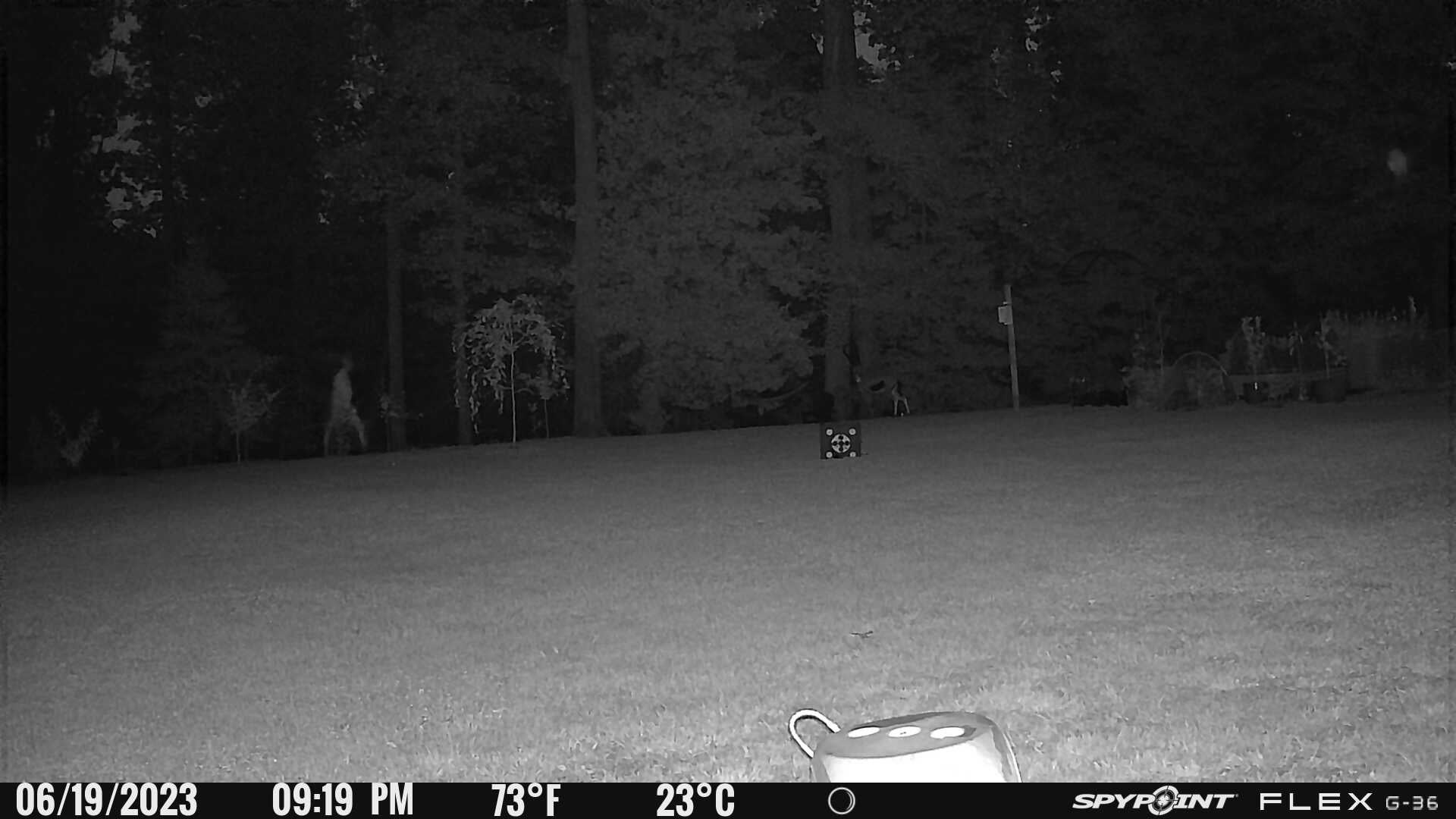
The Flex G-36 improves megapixels and performance over last year’s Flex without a price hike. It costs $100, which is $50 less than the similarly photo specced Tactacam Reveal X-Pro.
SpyPoint didn’t just give the new Flex G-36 a glossy veneer of three additional megapixels. It gave the trail cam a serious upgrade under the hood. Last year, the Flex only triggered at 10 and 60 feet. The Flex G-36 triggered at 10, 60, and 110 feet—day and night. It shot three photos of me in frame at each distance too.
The photos are crisp with no motion blur, and while the daytime photos are excellent, the night photos are the most impressive. The IR flash is even and reaches far into the night to produce high-detail photos after sunset.
The SpyPoint app is intuitive and easy to use. If you have hundreds of photos you can easily sift through them using the “buck” filter. I’ve used it on my other SpyPoint cameras and it’s not 100 percent accurate, but it’s a quick way to find peak deer activity times frames.
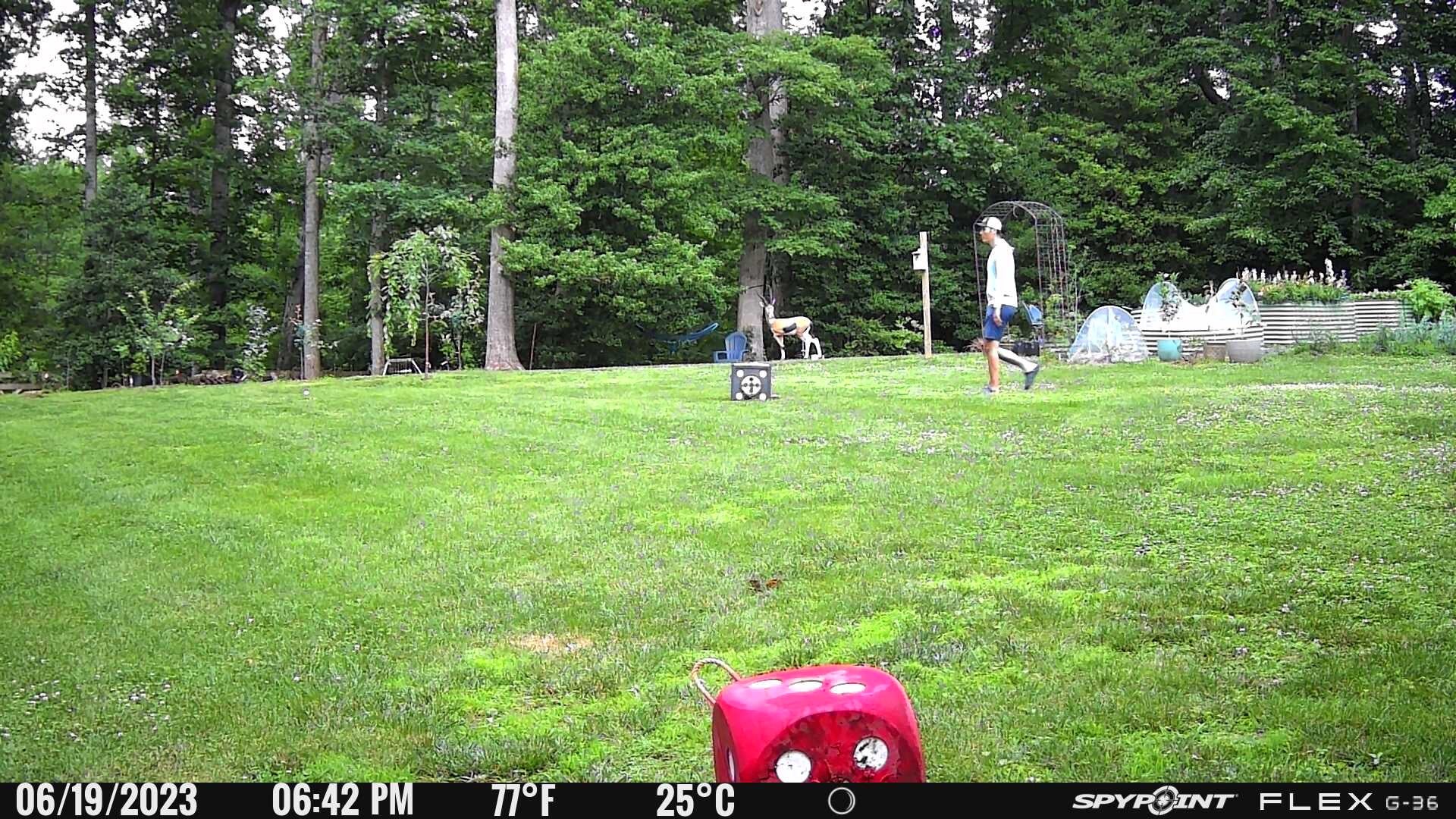
My one knock on the Flex G-36 is that it takes about a minute to reset between bursts of photos even though I had it set to no delay. In the walkthrough test, I walked from left to right and then right to left. The camera wasn’t capturing my second trip unless I waited about a minute between triggerings. That slight delay could cost you a photo of the second deer down the trail, which so often is the mature buck following a doe. But still, for $100 you can’t go wrong with the Flex G-36. —S.E.
Best Night Photos: Stealth Cam Deceptor
Alex Robinson
Key Features
- 8 AA batteries
- 40 megapixel images
- 1440p HD video
- .3 second trigger speed, 2 second recovery time
- Advertised detection range: 80 feet
Pros
- Took excellent “low-glo” night photos
- Captured night images at 110 feet
- Great value
Cons
- App and customer service reviews are all over the place
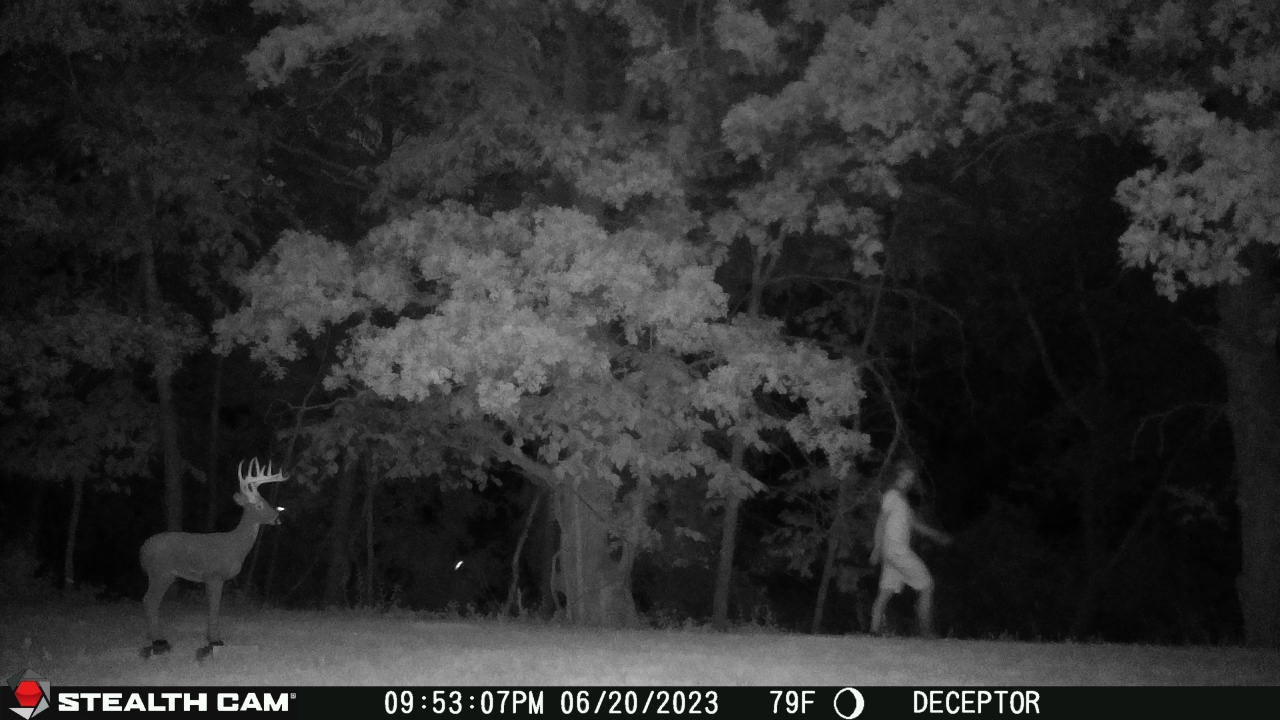
We all know that big bucks move most frequently at twilight and nighttime. Unfortunately, a lot of cameras on the market, especially the “no-glo” versions, produce crappy nighttime images. Instead of a clear picture of a shooter buck you end up with a blurry, ghost-like critter in the frame. Is it your target buck or a just another basket-rack?
This was not the case for Stealth Cam’s new Deceptor no-glo camera. This cell camera produced solid nighttime images at 10, 60, and 110 feet. That’s impressive considering the Deceptor’s advertised detection range is only 80 feet. The only other cameras we tested that were able to capture images at 110 feet were the Tactacam and the SpyPoint. For a sense of nighttime image quality, look at the 3D deer target (15 yards from the camera) and you’ll see tines clearly. No problem counting points in that image.
The images are even more impressive when you consider that the Deceptor is a no-glo camera, which means there are black filters over its red LED lights. Typically, no-glo cameras have a limited nighttime range and slow shutter speeds to compensate for less light hitting the subject (a slow shutter speed creates a blurry moving image). But that wasn’t a problem for the Deceptor in my walkthrough test. Even when I was walking at 60 feet, at the edge of the woods, the camera was able to capture me clearly.
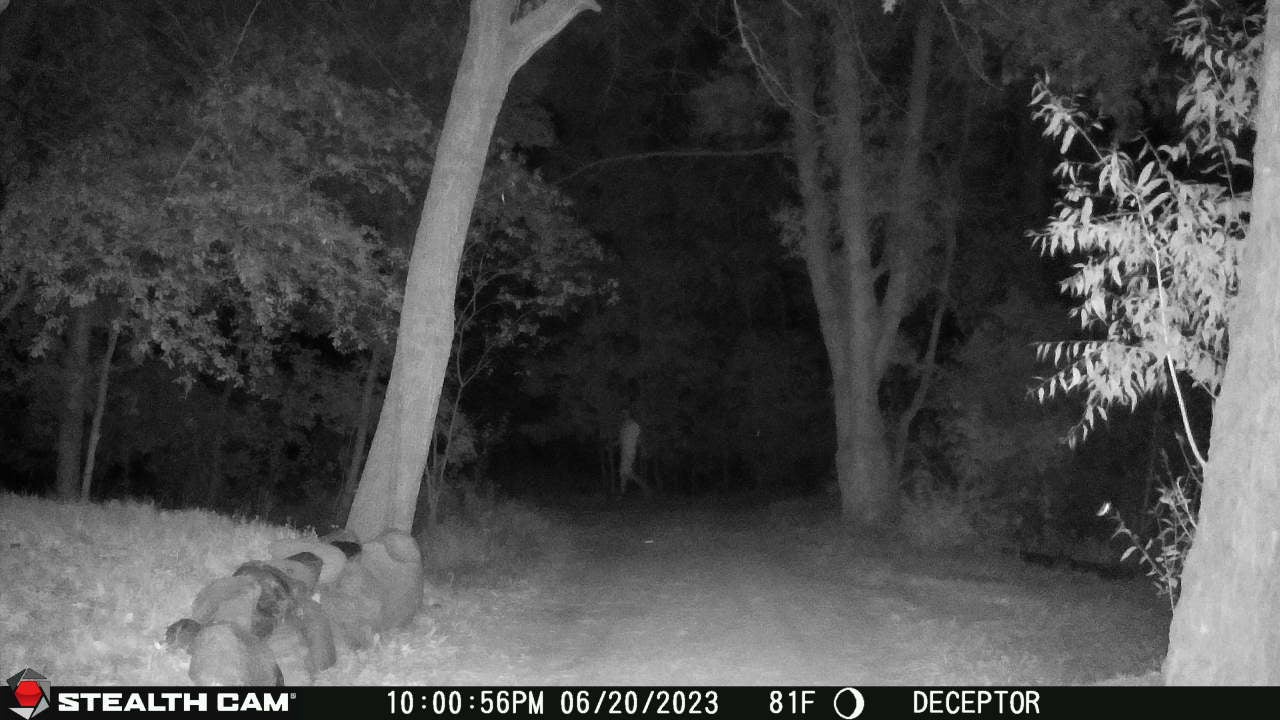
The pros of a no-glo camera is that they don’t create a bright red flash while taking images at night. Some hunters argue that deer aren’t spooked by the red LED flash, others swear that the blacked out no-glo is the only way to go. When I walked by the camera at close range at night, there was no detectable noise or light to signal that the camera had fired. For hunters targeting mature bucks that might be skittish around trail cameras, this is an excellent option. The only downside to the Stealth Cam is that the reviews of their Stealth Command Pro app and customer service vary wildly. Many users report problems with cameras not connecting, or the app crashing (it has a 2.8 rating in the app store). While using last year’s model Stealth Cam I was unable to connect to the app and Stealth customer service was unable to fix my issue. Hopefully they’ve ironed out those issues so you’ll be able to easily access all the great images the Deceptor is going to capture. —A.R.
Best App: Moultrie Mobile Edge
Alex Robinson
Key Features
- 16 AA
- 0.85 trigger speed
- Advertised Detection Range: 80 feet
- Free unlimited cloud storage
- Internal memory (no SD card)
- SmartTags for species and buck recognition
Pros
- Awesome features
- Easy setup
- Affordable for a cell cam
Cons
- Slower trigger speed
The Moultrie Mobile Edge is a functional, capable camera and costs only $100, which is impressive. But what’s truly remarkable about this cellular trail camera is all of the features it brings to the table through its Moultrie Mobile app. The camera automatically connects to the strongest network in the area (without requiring you to switch sim cards) and promptly sends photos. Here’s the cool part: The Moultrie Mobile app is designed with image recognition, so it identifies deer (including bucks vs. does), turkeys, vehicles, and humans in photos. From there, you can sort your photos based on species. Say, for example, you set the camera in the summertime and by November you have a few thousand photos, including some shooter bucks, does, squirrels, coyotes, and that damn neighbor who keeps riding by on his ATV. The app allows you to filter images so you’ll only see the buck photos. What’s more, it gives you activity data, showing when bucks are passing by the camera most frequently.
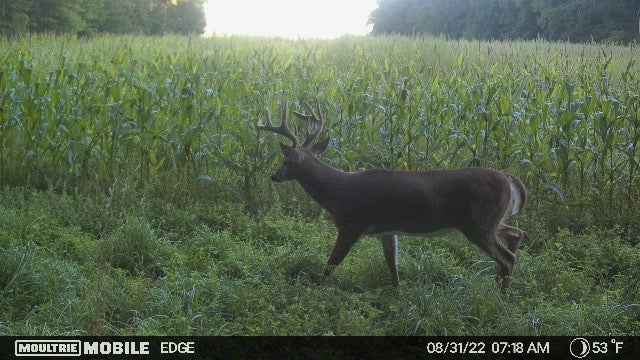
I hung my test camera on a cornfield edge in a core area of our hunting property. According to the app, the highest buck activity for this site is 6 a.m. (I looked through the photos manually to confirm that the app was correct, and it was). Besides time of day, the activity data also accounts for temperature and moon phase. If you’re a serious deer hunter, I’m sure you already see the incredible possibilities for this technology. With a few cameras running on a hunting property over the course of several seasons, you’d have a powerful data set showing when bucks are moving based on time of season, time of day, temperature, and moon phase. This camera will do more than just pattern a specific buck, it will help you pattern deer activity in your area for a lifetime of good hunting.

The only downside of the Moultrie Edge is its slightly slower trigger speed. It had a hard time catching me at the 10 foot walkthrough (I was almost out of frame). It also missed me at the 60-foot range during the daytime. The camera did perform well in the night walkthrough capturing me at the 60-foot range and producing solid nighttime images. Also, the slower trigger speed didn’t seem to hurt the camera in the field; it captures multiple photos every time a deer walks by. —Alex Robinson
Bushnell Cellucore 20
Bushnell
Key Features
- 12 AA
- Less than one second trigger speed
- Advertised Detection Range: 80 feet
- Accepts up to 32 GB SD card
- Low glow
- 20 MP photo and HD video
Pros
- Easy-to-use app
- Triggered at 60 feet at night
- Customizable flash
- Solar compatible
Cons
- Inconsistent triggering at far distances
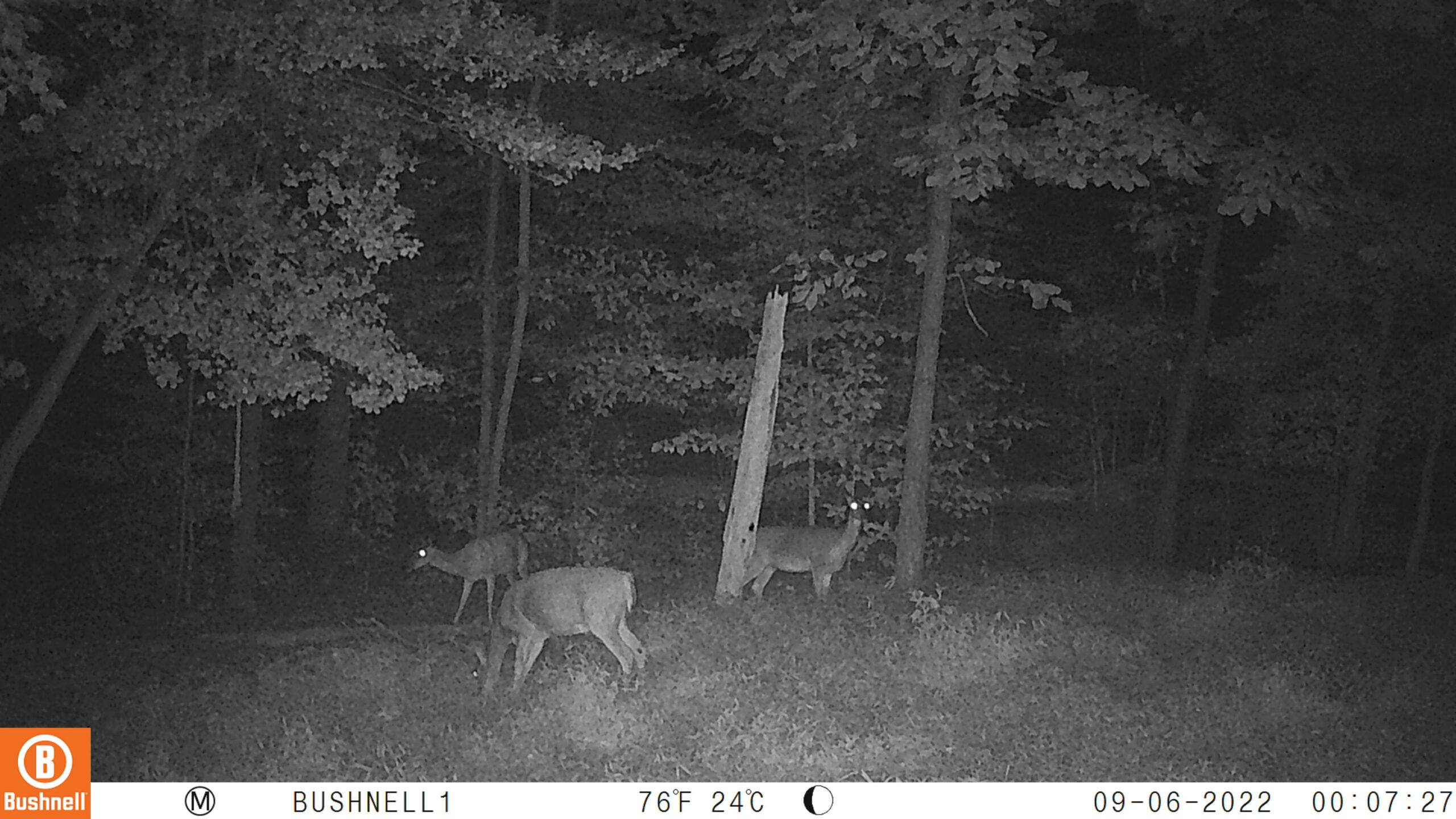
One of the best buys in cell cams is the Bushnell Cellucore 20 with its 20 MP photos, customizable low glow flash, and easy-to-use app for around $100.
During the walk-through test, the Cellucore triggered at 10 feet with a perfectly centered photo—day and night. The camera didn’t capture me at 60 or 100 feet during the day, but at night it captured a series of five photos of me walking at 60 feet.

The Cellucore has three flash settings: short range, fast motion, and long range. I used the long-range flash setting during the walk-through test and it illuminated out to 43 yards. The downside of the long-range flash is that close objects will be over exposed. For my in-the-field test, I used the fast-motion flash and it produced evenly illuminated photos with good detail from 5 to 15 yards. It also captured several deer walking without much movement blur.—Scott Einsmann
Cuddeback Tracks
Alex Robinson
Key Features
- 4 D batteries
- .25 second trigger speed
- Advertised detection range: 100 feet
- Low glow and no glo options
- Variety of affordable cellular plans
Pros
- Camera is easy to set up and use
- D batteries provide longer life
- Solar compatible
Cons
- Average performance in walkthrough testing
- No video option

Cuddeback is one of the trail camera O.G.s and their new Tracks cellular cam certainly stands out with its two large antenna paddles. Another big differentiator with this camera is that it runs on 4 D batteries instead of AAs, like all the other models in this test. Cuddeback says the D batteries provide more juice and lifespan for the money, which is notable. Anyone who has run a half-dozen or more trail cameras over the course of a deer season knows that batteries and SD cards can get spendy. The Cuddeback is also compatible with a solar panel to provide even longer battery life in the field.
From a performance standpoint, the Tracks camera did OK. It didn’t capture images at 110 feet and it missed me during the daytime walkthrough at 60 feet. Nighttime photo quality was decent. The camera did a great job of stopping motion at 10 feet. However, the images at 60 feet were not crisp. There were stronger performers at this price point, but if you’re a longtime Cuddeback fan and just want one cell cam to get started, this is the camera for you. Initial plans start at only $4 per month. —A.R.
Reconyx Hyperfire 2 Celluar
Key Features
- 12 AA lithium batteries
- 0.2 second trigger speed
- Advertised Detection Range: 100 feet
- Made in the USA
- Five-year warranty
Pros
- High quality photos and performance
- Excellent warranty and durability
- Fast trigger speed
Cons
- App crashed
- Records video, but doesn’t transmit through cellular
- Expensive
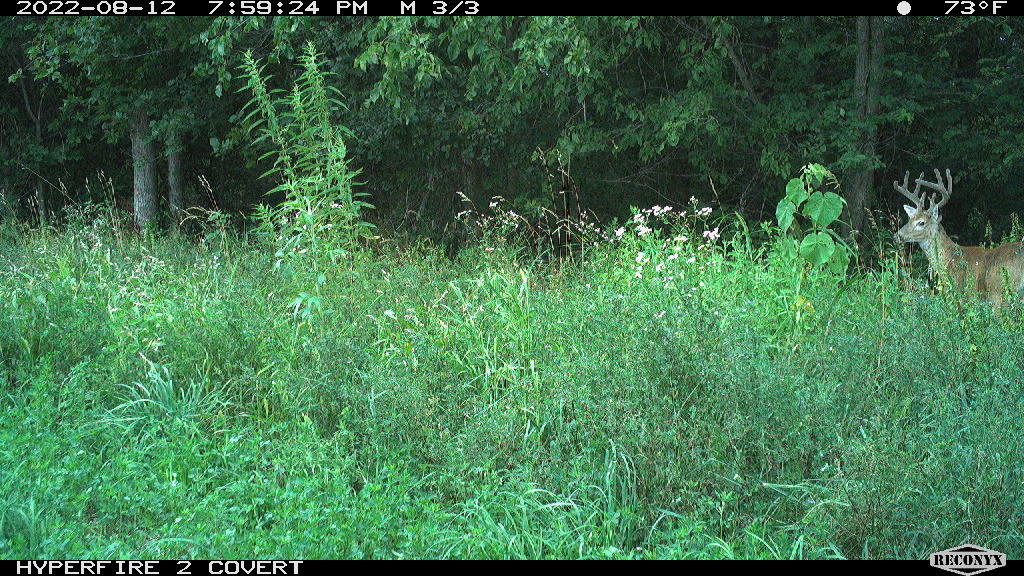
There’s a reason why most professional wildlife researchers who use trail cameras rely on Reconyx: Their cameras reliably deliver high quality images and run without fail. Hardcore hunters who want that same type of performance should consider the Hyperfire 2. This camera performed well in the walk through test, triggering out to 60 feet day and night and also catching me at close range. Importantly, it was the only camera that truly stopped motion at close range at night (you can see that image below). If you’ve reviewed nighttime photos during the rut, you know this is important. Often a buck that runs right by the camera is captured in a photo as a white blur, making it impossible to count points. That won’t be as much of problem with the Reconyx.

The Hyperfire 2 also performed well in the field, capturing a series of buck photos as he slunk through tall green grass on a property in Wisconsin. Nighttime field photos were excellent. It’s also worth noting that the camera was essentially silent in the walkthrough test. At close range, I could hear other cameras firing, and at night I could see a bright red flash at 60 feet. This was not the case with the Reconyx. There was no visible flash and there was no trigger noise whatsoever.
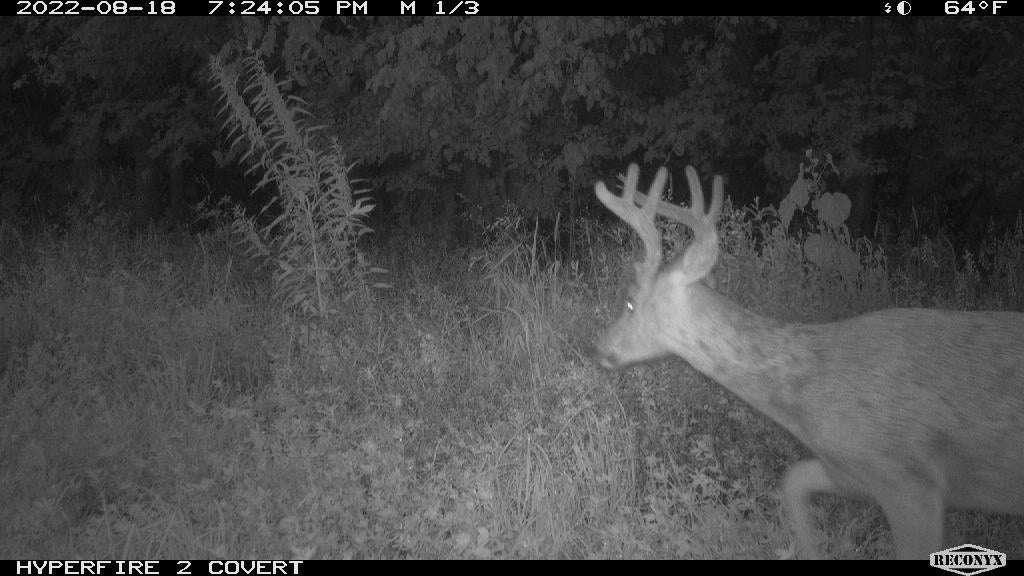
I have only two small quibbles with the camera. First, the app crashed several times when I started using it. I had to delete the app and reload it three different times. In the app store, I saw several reviews with users complaining about the same issue. Happily, all my photos were saved in my profile and Reconyx seems have to solved the issue. I’ve been running the app for about a month now without issue. Second, the camera did fog up for a few days. I received a few foggy pictures, and when my buddy went to check on the camera, there was a condensation spot inside the housing. This didn’t stop the camera from running and photos are now clear, but we did record a few days of foggy pictures. If price is no object, this is the best cellular trail camera you can buy. —Alex Robinson
Covert 2021 Blackhawk LTE
Covert
Key Features
- 12 AA batteries
- 0.65 second trigger speed
- 60 no glow LED’s
- 2-inch color viewer
- 100-foot flash range
- GPS function
Pros
- Battery life is very good with high quality image mode and lithium AA batteries
- Custom “Working” operating times in Covert App
- True no glow IR
Cons
- 100-foot flash range is closer to 60 feet with average clarity
- Video mode trigger speed is extremely slow
- False triggers in detection at night

One of the main reasons we picked the Covert 2021 Blackhawk LTE as one of the best cellular trail cameras was the operational customization within the app. You can set custom working times for when the camera is operational and taking photos. This can tremendously extend the already great battery life even longer. There is no question you can get a set of lithium AA batteries to last 12+ months with custom work times on this camera. Covert offers a great line of accessories for this camera. If you have a deer hunting property that you run feeders on, you can set this camera to instant trigger or hourly transfer times and run it via solar and rechargeable batteries. The camera has a 2-inch color viewer in the body, which allows you to get your angles right during set up.

The unlimited plan on the Covert online management page, is only $20 a month per camera. Which in today’s economy, is highly budgeable considering gas to and from to check the camera once a month is most likely going to result in more than $20 plus your time. —Drew Palmer
Stealth Cam DS4K Transmit
Alex Robinson
Key Features
- 12 AA batteries
- 0.2 trigger speed
- Advertised Detection Range: 100 feet
- Burst mode of 1 to 9 images
- Solar power pack compatible
- App monitors activity by day and weather data
Pros
- Wide variety of photo and video options
- Lots of customization through the app
Cons
- App failed to pair with camera during setup
- Mediocre nighttime photos
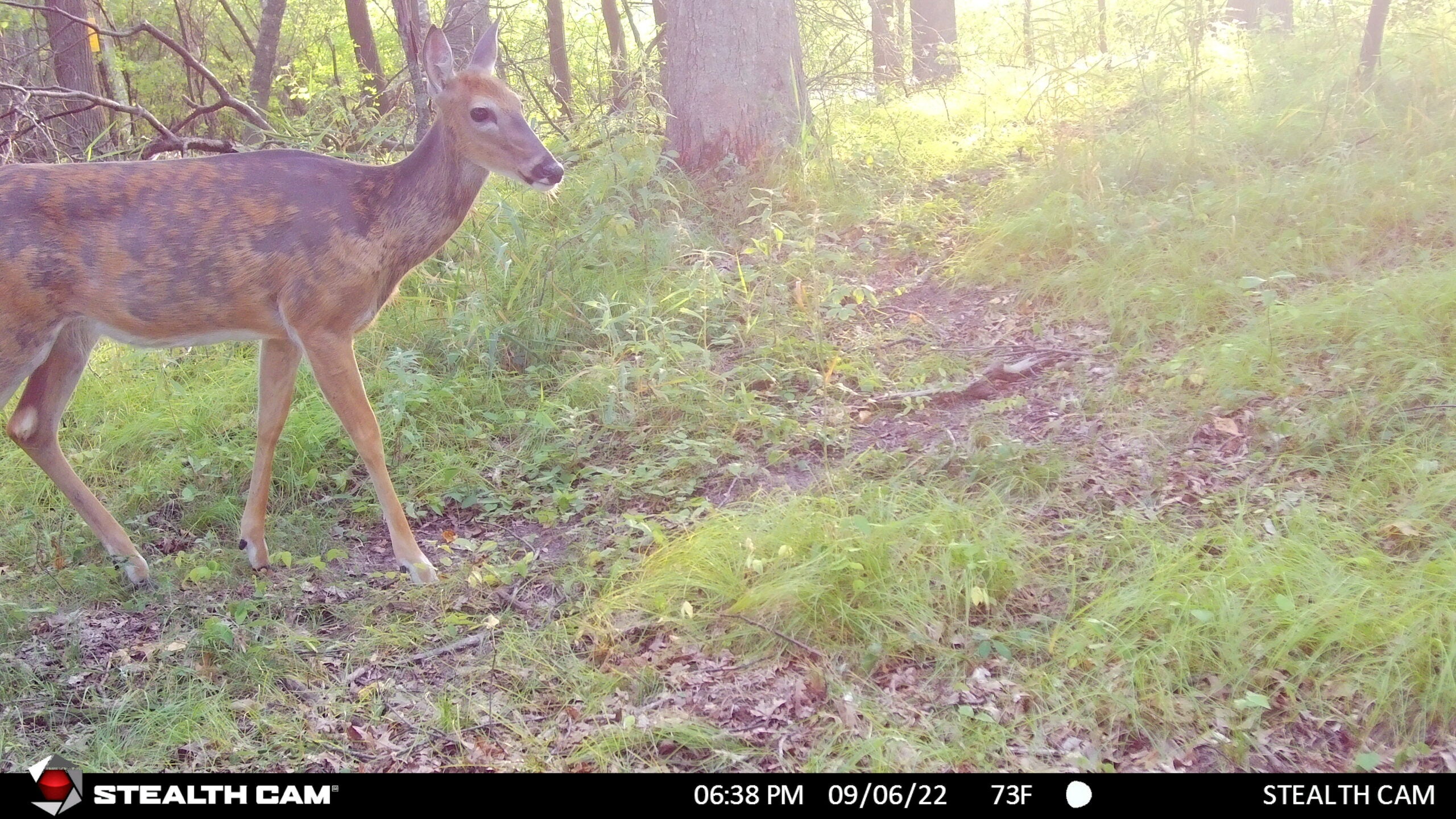
Let’s cover the bad news first: During setup the camera failed to sync with the app. I received an error code and called customer service. I spoke with a very nice representative who couldn’t figure out the issue and guessed that I had a bad sim card. After two hours of waiting on hold, I gave up.
Now, let’s assume the bad sim card was simply bad luck and focus on the good news: this camera offers a motherlode of interesting photo and video settings. It has four video resolution options (including 4K) and four photo resolution options (up to 32MP). It also has a interesting option that allows you to shoot in burst mode and record from 1 to 9 images per triggering. Other cameras often shoot three or maybe five images in burst mode.

In the walkthrough test, the Stealth Cam did a nice job of capturing me at close range and at 60 feet. Though the nighttime photo quality was not as good as other top cameras in this test. It did shoot high quality photos in the field. —Alex Robinson
Read Next: Stealth Cam DS4K Transmit Review
Wildgame Terra Cell
Alex Robinson
Key Features
- 8 AA batteries
- 0.7 second trigger speed
- Advertised Detection Range: 80 feet
- Compatible with solar panel
Pros
- App includes image recognition software
- Affordable price point
Cons
- Subpar performance in walkthrough test
- Subpar nighttime images
- Antenna didn’t stay up
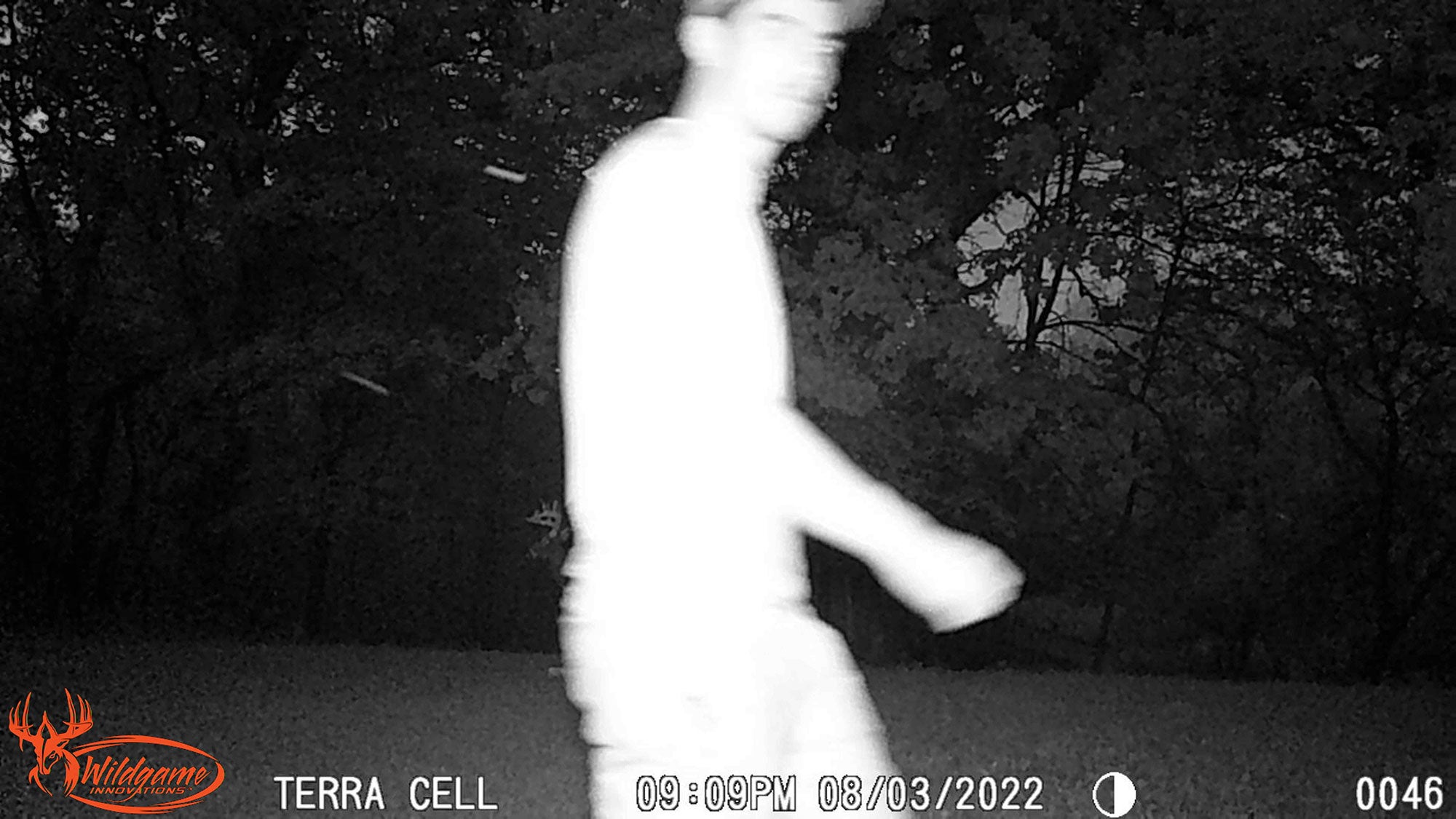
Wildgame is known for making affordable trail cameras and at $120, the Terra Cell is right on par with other budget cell cams in this test. However the Terra Cell’s performance wasn’t as strong as those competitors. During the walkthrough test, the camera did not trigger at 60 feet, during day or night. At 10 feet, it did a nice job of capturing me in the middle of the frame, though image quality at night was not very strong.
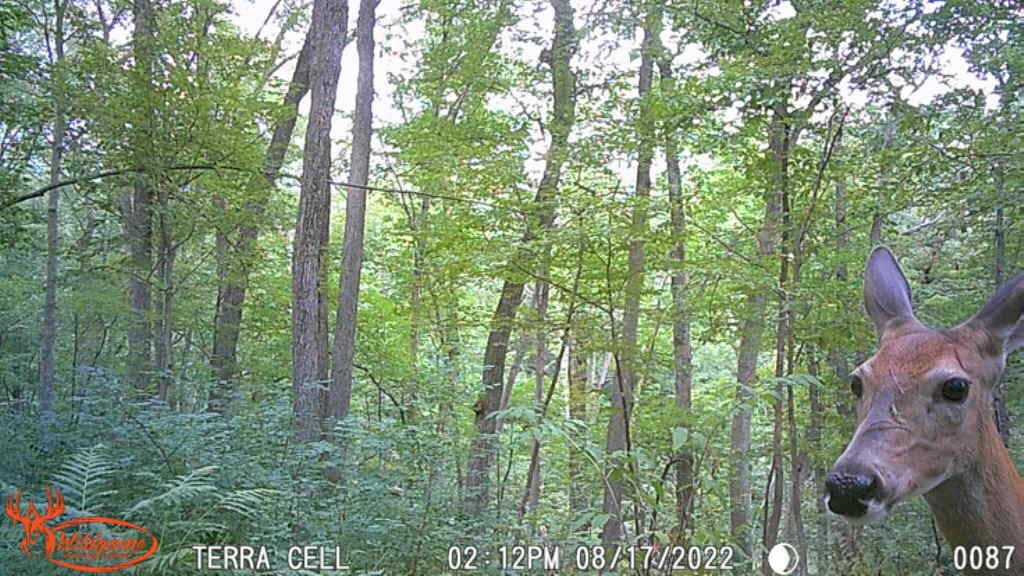
On a happier note, the HuntSmart app allows you to sort photos by species and time of day (though it doesn’t present the data quite as intuitively as the Moultrie Mobile app). Still, if you’ve been running Wildgame cameras for years and want to step up to the cellular version, this would be a solid option to hang near a feeder, food plot, or key natural food source. —Alex Robinson
Trail Camera Accessories We Like
- SD Card: Sandisk Extreme Pro
- Batteries: Energizer Lithium
- T-Post Mount: Moultrie Multi-Mount
Cellular Trail Cameras and Hunting Ethics
There is some controversy in the hunting community about using cellular trail cameras to hunt big game (make sure to check your local regulations before buying and using a cellular trail camera). Recently, the Boone & Crockett club issued this policy in regards to cell cams: “The use of any technology that delivers real-time location data (including photos) to target or guide a hunter to any animal in a manner that elicits an immediate (real-time) response by the hunter is not permitted. ‘Real time’ is the key concept. Seeing a photo and harvesting an animal a few hours later, or even the same day, uses this technology to assure a kill. It also takes advantage of the animal, which cannot detect impending danger from a camera. Waiting several days, or even until the following season, to pursue an animal captured on camera is different, and would not be deemed an unethical use of a trail camera.”
In reality, I don’t see many hunters using cell cams to capture images of a buck on a food plot or corn pile and then running out there to kill him that moment (though I’m sure it has happened). A more practical, and ethical, way to use this technology is to record consistent data on deer movement and then using those patterns to decide where to hunt. Most of us have limited days to hunt, so picking the prime spot is critical. The best cellular trail cameras help with that.
FAQs
Q: Are cellular trail cameras worth it?
Hell yes. There’s some extra setup and expense required with cell cams, but once you get them dialed they send photos to you real time. It’s hard to overstate how much fun it is to receive deer pictures all season long. Plus, with a smart trail camera strategy, you can pick the perfect places to hunt at the perfect times. There’s much less risk of spooking deer because there’s no need to hike in and check cameras (read our guide on where to hang trail cameras, here).
Q: Do all cellular trail cameras require a subscription?
All the cameras in this test require a subscription. But setting up the subscription is generally quick and painless. It’s all done through each company’s app, and all you need is your credit card information. Plans usually aren’t too expensive ranging from about $5 per month to a little more than $20 per month. I recommend going with unlimited image plans.
Q: How long do batteries last in a cellular trail camera
This depends on the type of batteries, the activity in the area, and the setting of the camera. For max battery life, go with lithium, select a lower megapixel image, and opt for more delay time between photos (video kills batteries more quickly). In an area with average deer activity, a cell camera will easily last an entire season or longer.
Why Trust Outdoor Life?
Since 1898, OL has been a leading authority in testing and reviewing hunting gear, fishing tackle, guns and shooting equipment, and much more. We have more than a century-long history of evaluating products, and we’re now bringing that expertise to online reviews. Our editors are experienced outdoorsmen and women, and most importantly, we’re trained journalists. We prioritize field testing and objective data when reviewing products. We conduct interviews with gear manufacturers and engineers as well as outdoor experts so that our readers have an understanding of how and why a product works—or doesn’t.
Advertising does not influence our gear reviews and it never will. While we always focus our coverage on standout products—because we want our readers to be aware of the latest and greatest gear—we also cover the flaws and quirks of any given product.
Final Thoughts on the Best Cellular Trail Cameras
The best cellular trail cameras are powerful scouting tools. But they are also incredibly fun to use (after you get through the setup process). There’s nothing like receiving pictures of shooter bucks all week to get you fired up for a weekend hunt. Even when you’re working, mowing the lawn, or watching your kids’ football game, one simple photo can bring you right back to the woods, if only for a moment.
- Best Overall: Tactacam Reveal X-Pro
- Best Budget Cell Cam: SpyPoint Flex G-36
- Best Night Photos: Stealth Cam Deceptor No-Glo
- Best App: Moultrie Mobile Edge
- Cuddeback Tracks
- Bushnell Cellucore 20
- Reconyx Hyperfire 2
- Covert Blackhawk LTE
- Spypoint Flex
- Stealth DS4K Transmit
- Wildgame Terra Cell
The post The Best Cellular Trail Cameras of 2023, Tested and Reviewed appeared first on Outdoor Life.
Articles may contain affiliate links which enable us to share in the revenue of any purchases made.
Source: https://www.outdoorlife.com/gear/best-cellular-trail-cameras/

